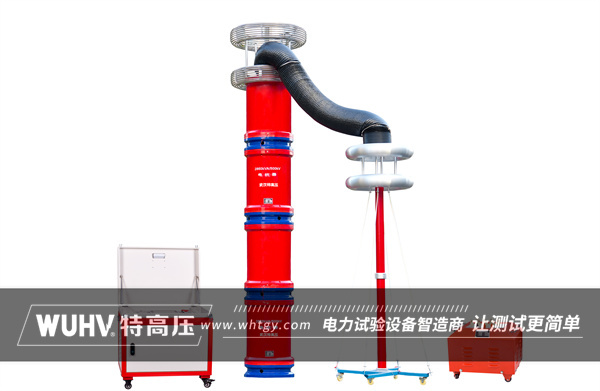The series resonanceunder Wuhan UHV can help many power workers conduct various power tests more conveniently.

resonant frequency
The resonant frequency refers to the natural oscillation frequency of a system, which is the time frequency at which the system can vibrate with the maximum amplitude without external force. This concept is widely applied in the fields of physics, engineering, and technology, especially in the areas of electromagnetics and mechanical vibration.
The resonant frequency (usually represented by the Greek letter ω) for a mass spring system can be calculated using the following formula:
[ f = \frac{1}{2\pi} \sqrt{\frac{k}{m}} ]
Among them, (f) is the frequency (unit: Hertz Hz), (k) is the stiffness coefficient of the spring (unit: Newton/meter N/m), and (m) is the mass hanging on the spring (unit: kilogram kg).
In mechanical systems, the resonant frequency is related to the natural vibration period of the system; In electromagnetic systems, the resonance frequency is related to the resonance characteristics of the circuit. For example, in wireless communication, the resonant frequency of LC oscillation circuit determines the transmission or reception frequency of the circuit.
Resonant inductor
Resonant inductance is not a term that directly defines the characteristics of inductance, but in resonant circuits, inductance is a key component. Resonant inductance refers to the component that acts as an inductor in a resonant circuit, and its inductance value (usually represented by L) and capacitance value (C) in the circuit jointly determine the resonant frequency of the circuit.
In a series resonant circuit, the inductor (L) and capacitor (C) are connected in series. When the current or voltage in the circuit reaches a certain value, the inductor and capacitor in the circuit will resonate, producing a specific frequency, which is the resonant frequency. The formula for calculating the resonant frequency is:
[ f = \frac{1}{2\pi\sqrt{LC}} ]
Among them, (f) is the resonant frequency, (L) is the inductance value, and (C) is the capacitance value.
In summary, the resonant frequency is the natural oscillation frequency of the system, and the resonant inductor is the component that acts as an inductor in the resonant circuit. Its inductance value and the capacitance value in the circuit jointly determine the resonant frequency of the circuit.



















